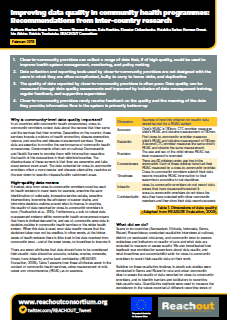In all countries with community health programmes, close-to-community providers collect data about the people that they serve and the services that they provide. Depending on the country, these services include a mixture of health promotion, disease prevention, referral, and curative and disease management services. These data are essential to monitor the performance of community health programmes. Governments often rely on national Demographic and Health Surveys to provide them with information regarding the health of the populations in their districts/counties. The disadvantage of these surveys is that they are expensive and take place several years apart. The data collected by close-to-community providers offers a more regular and cheaper alternative, reaching all the way down to specific villages/facility catchment areas.
However, data collection and reporting tools used by close-to-community providers are not designed with the users in mind: they are often complicated, bulky to carry to home visits, and duplicative. The quality of data reported by close-to-community providers is often poor. Data quality can be measured through data quality assessments and improved by inclusion of data management training, regular feedback, and supportive supervision. Finally, close-to-community providers rarely receive feedback on the quality and the meaning of the data they provide and the information flow in the system is primarily bottom-up.
This brief provides suggestions for national policy makers and the supervisors of close-to-community providers of health care on how this situation can be improved.
Download the brief.

This project is funded by the European Union.

